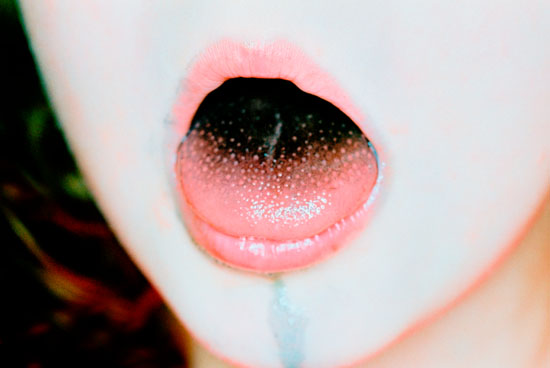CURATOR Justin Paton ORGANISER Dunedin Public Art Gallery OTHER VENUES Dunedin Public Art Gallery, December 2001–March 2002; Auckland Art Gallery, 14 June—31 August 2003 PUBLICATION essays Anne Kennedy, Justin Paton, Lydia Wevers
Anne Noble has been a key figure in New Zealand photography since the late 1970s. Her work combines the documentary and the expressive. States of Grace surveys more than two decades of her work.
Noble was raised a Roman Catholic and her photography often concerns religious or spiritual subjects, or imbues her subjects with a sense of the religious, the ritual. Or, as the catalogue blurb explains: ‘Noble’s art is distinguished throughout by its formal beauty, its care for people and the places they inhabit, its feeling for the textures of the world and the play of light over them. Patient, poised, and intimate, Noble’s photographs discover states of grace amongst the faces and objects of ordinary life.’
States of Grace includes early works, from the 1970s, capturing ephemeral phenomena: light on water, light passing through a window, a fleeting glimpse of a face. Here, light takes on a quasi-religious quality.
Noble’s 1981–2 photo series, The Whanganui, explores the life and history of the Whanganui River, including its relevance for local iwi. The river is a subject of great personal relevance—she was born in Whanganui in 1954. Noble said she wanted to 'make people love it (the river) very deeply’. The series gives her more opportunities to explore the play of light on water. The project brought her to increased public visibility, after it debuted at Whanganui's Sarjeant Gallery in 1982, and then toured nationally.
By contrast, the States of Grace also contains Noble’s more carnal series, Night Hawk, also 1982. These suggestive, intimate studies of male and female nudes, lilies, crumpled sheets, and ropes were made for the National Art Gallery’s touring New Zealand photography show, Views/Exposures, that same year.
In 1988, Noble is more cloistered, shooting a photo essay about the contemplative life of Benedictine nuns in London's Tyburn Convent. In the Presence of Angels: Photographs of the Contemplative Life documents nuns living under the monastic rule of Saint Benedict—‘the great silence’. Noble was inspired by his words: 'Listen ... incline the ear of your heart.'
Throughout her work, Noble intertwines the social and ethical, the political and poetic, the spiritual and sensual. In the close-ups for A Beautiful Botany (1990–1), she imagines her camera following the flightpaths of bees. In Hidden Lives: The Work of Care (1994), she records the lives of elderly intellectually disabled people and their unsung carers.
A rare colour series, Ruby’s Room (1998–2007) offers an epic chronicle of Noble's daughter’s mouth, as it is filled with coloured lollies and blows bubble-gum bubbles. These close-ups scramble the sexual suggestiveness of Night Hawk with the innocent, spontaneous pleasures of childhood.
The show concludes on a grave note, with a new commission. Noble’s installation In My Father’s Garden (2001) mourns her father. It is the only work in the show where Noble herself appears, standing over him, lying in state. It also contains a video component.
In 2003, the now Wellington-based artist is awarded the New Zealand Order of Merit, for services to photography. In 2009, she becomes an Arts Foundation Laureate.














































































































